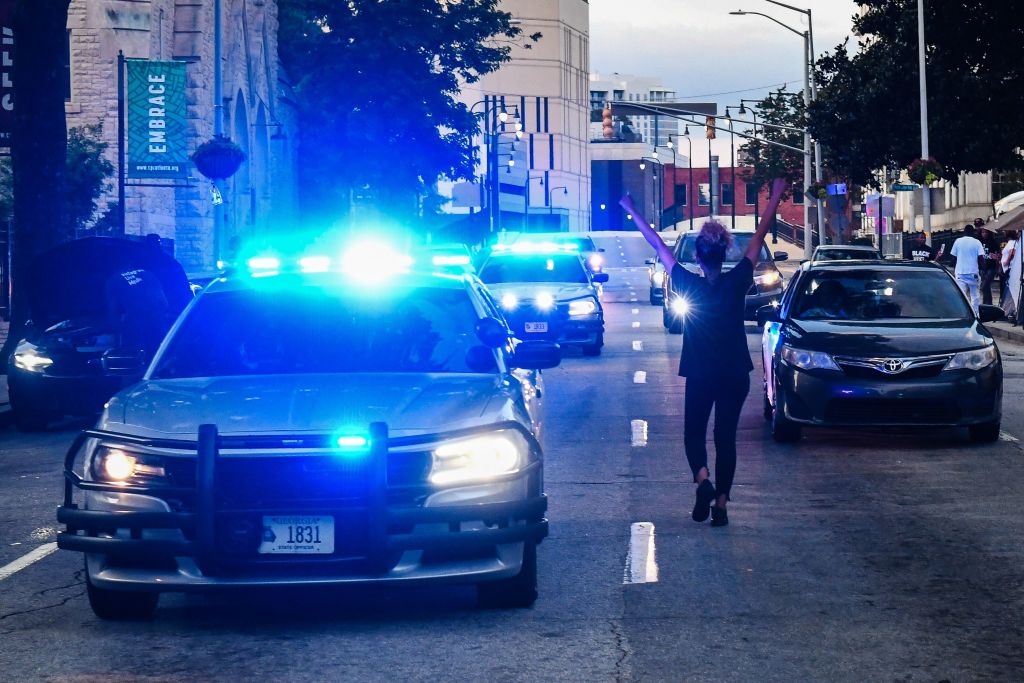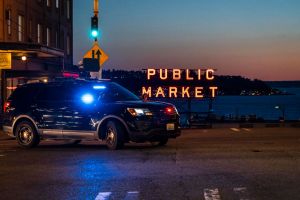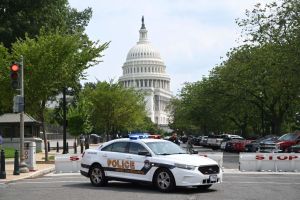‘Nothing works if public space is unsafe,’ says the respected urban sociologist Patrick Sharkey. The ‘Defund the Police’ initiative demands deep structural changes. But are incremental reforms more likely to deliver safe and lawful policing to those who need it most?
Reflecting on the prevalence of gun violence in many black communities, Sharkey writes:
‘An expanding body of research has shown just how damaging violence is to community life, children’s academic trajectories and healthy child development. We have rigorous, causal evidence that every shooting in a neighborhood affects children’s sleep and their ability to focus and learn. When a neighborhood becomes violent, it begins to fall apart, as public spaces empty, businesses close, parks and playgrounds turn dangerous, and families try to move elsewhere. Violence is the fundamental challenge for cities: Nothing works if public space is unsafe.’
Sharkey does not believe that sufficient community trust can ever be generated. Instead, he focuses on programs that could reduce violent behavior in the absence of a police presence. To undercut the need for a substantial police presence, he dramatically understates the share of young men in many black neighborhoods who are high-risk for violent behavior:
‘In neighborhoods with extreme gun violence, police officers should continue to play a role in responding to some violent crimes, working with the community to solve problems in locations where shootings are common, and focus their attention on the tiny fraction of residents who account for a disproportionate share of serious violence.’
The Chicago study Sharkey references reports that ‘70 percent of all nonfatal gunshot victims…can be located in co-offending networks that comprised less than six percent of the city’s population’. Why is the denominator Chicago’s entire population, given the high concentration of young black men in the high-risk network?
The referenced article states that ‘the average nonfatal gunshot victimization rate in Chicago is 46.5′. This rate is ‘considerably lower for whites (1.62) and Hispanics (28.72), but more than double for blacks (112.83)’. Such disparities only widen when considering gender and age. The rate for black males between 18 and 34 is ‘12-times the city average’, indicating that roughly 1 in 200 men in this group are victims of a nonfatal shooting each year.
The share of a neighborhood’s young black men in the high-risk network is clearly much more than six percent. Fortunately, we can calculate that share from the data in another study with the same lead author. Studying two black Chicago neighborhoods, this study found that 40 percent of homicides could be directly tied to a network of 3,718 high-risk individuals, or 4.5 percent of its 82,000 residents.
Given the demographics of the neighborhood and of the high-risk network, approximately 3,235 of the high-risk individuals were black men, almost exclusively younger than 35 years old, while there were approximately 11,014 black men, 15 to 34 years old, in the neighborhood. Thus, almost 30 percent of neighborhood’s young black men were part of the high-risk network, not a ‘tiny fraction’.
Many northern and Midwestern cities have similar neighborhoods. With such large concentrations of high-risk young black men, it is hard to see how significant policing can be eliminated. What should happen is a replication of the successful community-policing policies in Boston, Pittsburgh, Camden and other cities across the nation.
For example, Pittsburgh police gather a data base of high-risk individuals similar to Chicago’s. Police then visit these individuals’ residences and offer substantial support to help them turn their lives around. However, they are also told in no uncertain times that if they don’t, the judicial system will deal with them harshly.
[special_offer]
Sharkey and others are correct that first responders could deal better with a number of police functions than armed personnel can. The Eric Garner, George Floyd and Rayshard Brooks cases all began in a similar manner: A storeowner calls, not to report a robbery or threatening behavior, but a black man doing something that is illegal. Trying to sell illegal goods or pass counterfeit money, or drunken driving, can all be serious crimes. But in these cases of Garner, Floyd and Brooks, they were not. Not surprisingly, these middle-aged family men were indignant, if not belligerent, when confronted with arrest. The resulting escalations were deadly. There must be changes in protocol in how to handle these relatively minor, non-violent criminal behaviors.
Non-armed enforcement personnel already exist. In New York City, there are transit police and airports and other transportation hubs have upgraded security guards. Every police department should have such units, capable of handling reports of non-threatening misdemeanor offenses. These responders would not be armed and would have extensive social-worker training. They can issue summons but not able to make arrests. Of course, they could also call for other personnel if situations escalate. But they should be trained to only do so in extreme cases. In all three deadly situations, summons to appear in court would have ended the interactions, particularly if they came from individuals other than armed police officers.
There must be a serious attempt to reduce the biased use of non-lethal force and a reassessment of what calls should be handled by personnel other than armed police officers. Efforts will differ from city to city, but should follow the best practices that have proved effective in many urban police forces. We must be firm in our commitment to effect change, but do so without demonizing law enforcement. If we work collectively wherever possible, we can build more effective police community relations.


















